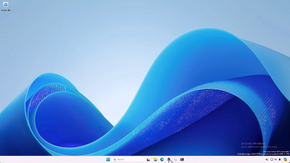Build list legend
Non-existent page
| Version of Microsoft Windows | |
 | |
| OS family | Windows 11 (NT 10.0) |
|---|---|
| Version | 24H2 |
| Semester | Germanium |
| Architecture | AMD64, ARM64 |
| Latest build | 10.0.26085.1 |
| Release date | 2024 |
| Client counterpart | |
| Windows 11 2024 Update | |
| Replaces | |
| Windows Server 2022 (LTSC) Windows Server, version 23H2 (AC) | |
Windows Server 2025 is an upcoming long term servicing channel release of Windows Server, slated for release in the year 2024. The operating system was announced on 26 January 2024.[1]It is the first version of Windows Server to support the ARM64 architecture.
The functional levels for Active Directory domains and forests have been updated to level 10 to accommodate for an architectural overhaul in the Extensible Storage Engine that extends the overall database paging size to 32,768 pages and incorporates the use of 64-bit long value IDs, along with the addition of new attributes towards the Active Directory schema.
Hotpatching, a feature that allows system updates to be applied on top of a live system without the need for reboots, has been extended to support all applicable Windows Server editions rather than being limited to select releases such as Datacenter: Azure Edition and Azure Stack HCI.
Build upgrades through the Windows Update service (via the Unified Update Platform) are now supported; this also includes upgrades instituted via the Windows Insider Program.
Virtual machines now support discrete device management, allowing the host machine to allocate graphics processing units to individual VMs for large workloads. GPU partitioning has been implemented into the operating system, allowing servers to reserve memory for one GPU across multiple virtual machines at once in a multi-GPU configuration.
Generation 1 virtual machines (which rely on BIOS system firmware) have been deprecated.
Performance optimizations have been made to network-attached storage servers with NVMe 2.0 drives through the introduction of a TCP-based initiator. Native support for data compression in storage replicas and within the ReFS file system has been introduced, and thin provisioning support has been added to the Storage Spaces feature.
NTLM authentication requests can now be throttled over a set duration of time (via the Set-SmbServerConfiguration parameter -InvalidAuthenticationDelayTimeInMs) if a user sends a bad request. Server Message Block requests are now signed in all Windows releases by default in an effort to prevent man-in-the-middle attacks, and new group policies for minimum and maximum SMB versions have also been added.
As part of a gradual phase-out process, the NTLM security protocol has been replaced by Kerberos to prevent further future pass the hash and SMBRelay attacks against existing user accounts. Non-local mailslots (a primitive IPC mechanism) have also been deprecated, and are disabled by default.
Build list legend
Development of Gallium fluently transitioned into Germanium around build 25941 and did not enter a stabilization phase usually associated with the creation of release branches.